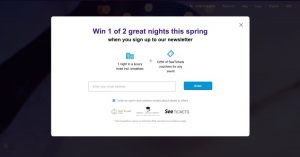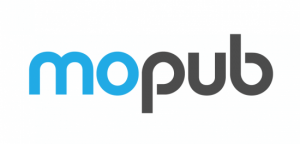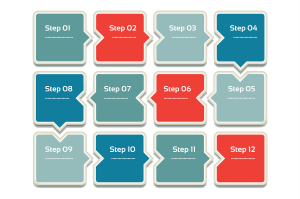
To be successful on social media, you have to know your audience.
Imagine you were giving a speech. What if you walked into a room with no idea who was there? What if you didn’t know what the event was even about or why people were there? You might kill it, or you might bomb. There would be no way to know.
Unless you’re into that kind of social experiment, you’d probably prefer to come into the room with a little more information and insight that would help you prepare.
Your message for this hypothetical speech would likely get across better if you had a chance to check out the room before you began. If you could scan the crowd for social cues before you walked on stage, you could read body language signaling level of interest. Even better, if you could get some information about the audience before you even walked in, or learn the purpose of the event. Learn why people were attending and more details about their prior experience and knowledge. Maybe even listen in to the speaker before you to see how many jokes they make and how serious or casual the conversation can be.
With that information, you would surely adjust your speech to fit the room. Would you give more background to provide context on your topic or skip the details since you are talking to a room of experts?
You might also think about your objective for the speech. Are you hoping to persuade a couple influential people sitting in the room or is your aim for an action to be taken by the entire audience in response to your words? Maybe you just hope to inspire a few people who will tell their friends and family about you later in their day.
On social media you don’t have the benefit of seeing things with your own eyes the way you would delivering a speech, but there are plenty of ways to virtually “scanning the room” before you walk in to speak.
In fact, with social media it’s almost easier to scan your audience and gather key data and cues. Like giving a speech, the more data you have about your audience before sharing content, the better you can tailor that content to engage and drive action.
Here are 10 things you can do to learn more about your audience, who they are, the way they talk, trends they follow, and style of content they prefer.
But first… who is your audience?
The first step to finding your target audience is looking at your business goals. What is your objective for social media? Are you looking to acquire new customers? Or is retention your focus? Just trying to build your brand and gain wider exposure?
If you’re building a new user base, or looking for new customers, you’ll want to consider the segment you are targeting in your broader marketing efforts. Perhaps this strategy is based on your current customer. Are you looking to bring in more of the same kind of client?
For example, say you run a restaurant in DC and you’ve seen some success with young professionals coming in for your happy hour right after work at 6pm on Fridays. You might decide to focus your strategy on increasing your customer base among young professionals who go to happy hour. In this case, you’d focus your social strategy on finding and engaging with young professionals in DC looking for entertainment after work.
On the other hand, maybe this restaurant has plenty of business for happy hour and is looking to grow its weekend brunch business. This may require targeting a new segment of customers. It may mean people who live outside the city and come in for brunch on the weekends, or families, or local foodies.
Decide on who you want to speak to and stick with it. Then use these tips and tricks to learn as much about people in your target audience as you can.
1. Use Facebook Ads to size your segment
This is a great little trick to help you determine the size of your segment. Follow the first set of instructions to create an ad on Facebook. Step two asks who you want to reach. Here you can play around with place, interests, and behavior and Facebook will show you how many people it estimates are in that segment.
For example, in the case of the restaurant. The marketer might choose to look for people between 22 and 30 who like beer and tend to move around a bit (as young professionals often do). Facebook says this segment is around 18,000 people.

2. Look at Pinterest Guided Search
Pinterest’s Guided Search tool is a great way to see the most popular content connected to specific keywords and topics. Try searching for keywords related to your product or words to describe your target users and see what comes up. Take a look at some of the Pins that appear under that keyword, the boards, and the Pinners. What words are they using to describe the products? Follow some of these people and take notes.
Here is what I found when I searched brunch on Pinterest. This may lead me to think sharing recipes, photos of food and making boards tied around specific holidays or food theme would work well for the restaurant.

3. Pinterest Analytics — Audience insights
You can also use Pinterest’s own analytics for business accounts to find some of this data about your existing users. Under audience, see what topics they are interested in. What else are they pinning? Consider sharing more of these kinds of things and keep an eye on it periodically to see what changes.

4. Use Topsy to search Twitter trends
Topsy is a great tool to show you what people are tweeting about. Try searching for a keyword related to your product or for an activity popular with your target segment. See who the most active users are? Explore the frequency of that keyword and related keywords. Pay special attention to the wording and style of the tweets on your given topic. Take some more notes!
5. Use Social Mention to see other comments
SocialMention shows you not only what is happening on Twitter, but some deeper analysis about mentions all over the web, including videos, images, bookmarks, and blogs. Again, try searching for keywords and behaviors and see what you find. You can see what is trending. Look through some of the recent content and check out popular keywords.
6. Blog comments
Take a look at some of the popular blogs in your target segment or the blogs of some of your competitors. Look at the comments for some extra context. What questions are asked? What answers are given by other users or other suggestions? Pay attention to new ideas that are brought up. These can give you content ideas in the future — more notes to take.
7. Identify and follow hashtags
Look at what hashtags are being used in your segment. A tool like Hashtagify.me invites you to search for a keyword and then it creates a little map of other popular hashtags connected to that word.
You can use this to find hashtags, then search for that hashtag on Twitter or set up a stream on your Twitter tool like Tweetdeck. Pay attention to the people who are using the hashtag, how they are using it, and what other hashtags they use along with it.
For example, when I searched “brunch” on hashtagify.me I got this map. It also shows me a few examples of Twitter users using that hashtag and also pictures with that hashtag being shared on Instagram.

8. Identify influencers
A lot of these tools will help give you hints here. SocialMention tells you a few top users who are active with that keyword. Hashtagify.me also provides top influencers who have used that searched for hashtag.
Buzzsumo is another great tool for searching influencers. It shows you people and blogs that are most active on a topic and those who are widely followed. You can sort by useful metrics like number of followers, or domain or page authority. With this you can find places to look for both content to curate and inspiration for your own content creation. Click on links they’ve shared to see a quick scan of the type of content they’re most likely to share. Make sure to follow these people and begin engaging with them on social.
Sticking with the brunch topic, one of the top influencers on the topic of brunch is this account below. They’re blogging about brunch in DC — perfect for that restaurant owner I talked about earlier. Reading their blog and Twitter stream shows us how people in DC are talking about brunch and other popular brunch destinations and brunch related content.

9. Search Popular Content
Buzzsumo has another cool feature that allows you to search content. Enter the same keyword and see what have been the most popular pieces of content shared on that topic. Again, use this as a source of inspiration and learning. What can you imitate and adapt to your own voice? How are people engaging with that content?
10. Measure Sentiment
This is not exact, but checking public sentiment for a few of your keywords will help you decide where to focus your message. Social Mention provides a few sentiment style metrics. For every keyword searched, it will show a positive/negative sentiment — meaning the tone and attitude with which your keyword is discussed on social. They also share a metric they call passion, which is based on the likelihood that the word or phrase will be talked about more than once.
With all this insight you are well equipped to deliver the perfect message to engage your audience. Let us know how it goes!
(252)
Report Post







